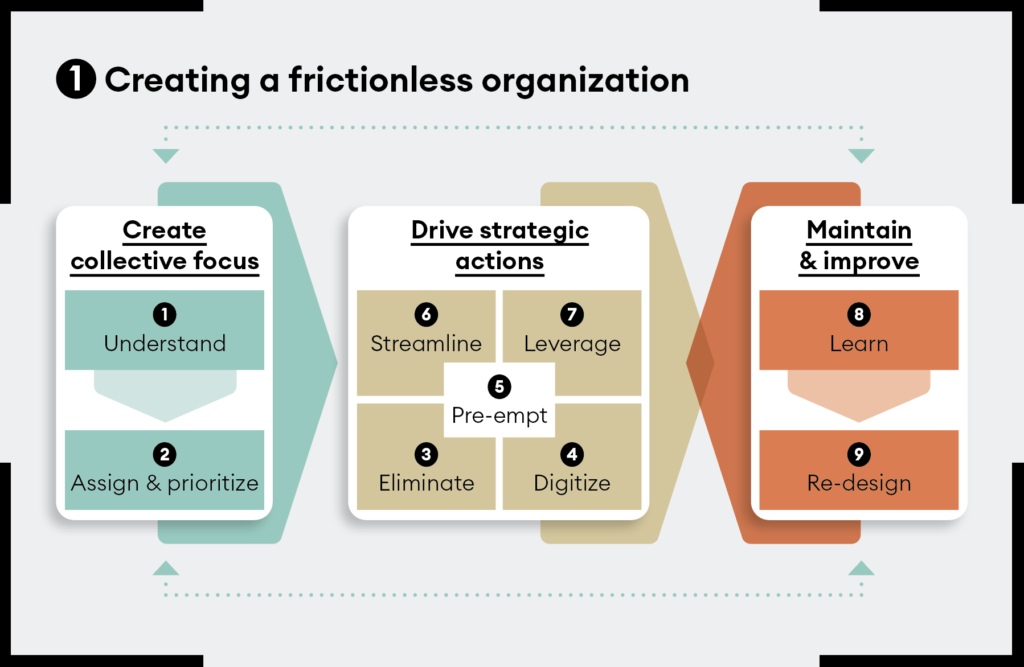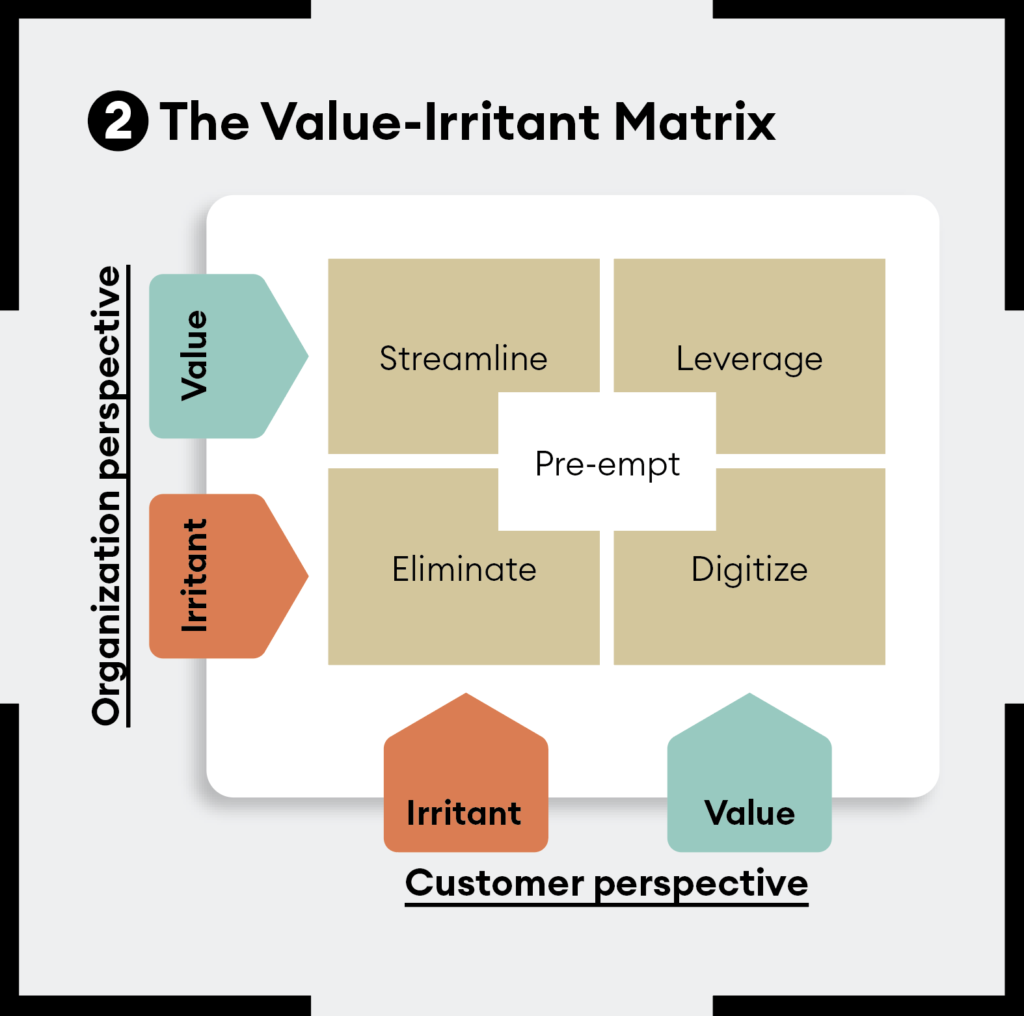Delivering brilliant customer experience demands a full-business focus on the reasons why customers make contact.
Businesses have spent years proclaiming that “customer experience is our number one priority”. They have made huge investments in technologies and processes, put a continual emphasis on getting more net promoters, and tried to make life easier for customers. Yet to what end? By many measures, businesses are seeing lower levels of customer loyalty. The American Customer Satisfaction Index overall score for customer satisfaction in the US in 2021 was lower than its 1994 baseline level.
Part of the reason for this is that customer expectations have risen. That is thanks to two categories of companies and agencies that have invented significant improvement in the customer experience: Innovators and Renovators.
Many of the Innovators are digital natives like Airbnb, Amazon, N26, Tesla, Uber, and Xero, while the Renovators include older and more complicated companies like Blizzard Entertainment, Cable One, E.ON, T-Mobile USA, United Airlines and Vodafone.
What such companies have in common is the drive to become ‘frictionless’ in every aspect of their product design and delivery, support and upgrades. They have made their products and services so effective that customers never have to make contact for the wrong reasons. Everything in frictionless organizations works simply and easily for customers and for their staff, especially frontline teams. They have figured out that becoming frictionless is a ‘whole of business’ challenge, not just for the customer-care or marketing teams to solve.
The results are compelling: higher revenue rates, much lower customer contact rates, less customer churn, and more engaged frontline workers. Becoming frictionless has led to true competitive advantage: enabling business survival, warding off other Innovators and Renovators, and delivering returns higher than companies that lag behind.
Consider how one Innovator does it. Wellington, New Zealand-based Xero aims to “simplify everyday business tasks for small businesses, accounts and bookkeepers” and now has over three million customers around the world. The company’s purpose is “to enable the small business economy to thrive through beautiful software, advice and connections”. As a native cloud provider, Xero exemplifies how Innovators are frictionless and intend to remain so. They obsess about the ease of use of their products, recognizing that small businesses are time-poor and not experts in accounting.
Instead of offering an inbound phone or email channel, Xero promotes “digital support for a digital company” by offering answers to a wide range of queries through its online portal, Xero Central, including 1,900 hours of video content. With 96% of questions answered in this way, Xero sets up outbound calls for the remaining 4%, assigning them to the most appropriate consultant to contact the customer within two hours. Xero Central also operates as a community platform where customers can share their questions or usage experiences with other customers in a customer-to-customer or ‘C2C’ format. Xero can also anticipate the next questions or issues raised in Xero Central by using machine learning and AI to watch and compare behaviour among its customers.
According to Xero’s chief customer officer, Rachael Powell, Xero wants its customer experience to be “outrageously positive.” It recognizes that “the goalposts keep moving”, however. “We need to anticipate what customers might need in the future,” says Powell. Xero is a great example of a company that has used digital means to make help and support as simple as possible.
Nine steps for a frictionless organization

We interviewed more than a dozen recognized leaders in customer experience and have collected their stories in our book The Frictionless Organization. Based on these discussions and secondary research, we produced a nine-step programme (see Figure 1) that all organizations can take to become frictionless, or to ensure that they continue to defeat the gnawing tendency to introduce friction.
1 Understand
The first step in becoming frictionless requires that organizations understand the reasons why customers are bothering themselves to make contact for help or support, be it to make changes, to express frustrations, or to find out more about their products and services. The best way to do this is to create a short list of between 25-50 customer contact reasons or intents, in the customers’ language: reasons such as “Why is my bill so high?” or “I need to cancel my account”. Most organizations collect and report hundreds if not thousands of reasons; or too few reasons, such as “billing” or “product questions”; or none at all. By focusing on a limited set of 25-50 intents, organizations are able to ensure a higher quality input from their frontline agents, and can also begin using speech and text analytics to create a more comprehensive profile of why customers are contacting them.
2 Assign and prioritize
The next step assigns the right action to each of these customer contact reasons and agrees on priorities to address them by assigning a reason owner.
Here, organizations have been successful using the Value-Irritant Matrix (see Figure 2) to work out if each reason is valuable or irritating, both to customers and to the organization. This produces one of four actions for each reason. More importantly, it demonstrates to the organization that functional leaders and department heads need to band together in order to determine root causes, solicit possible solutions and implement changes.
3 Eliminate
This is the most powerful action that any organization can take. In fact, in the age of ‘digital first’, Eliminate actions produce more tangible and long-lasting improvements in terms of customer experience and cost reduction. By definition, they relate to reasons for contact that are irritating to both customers and the organization; there really is no justification for them existing at all. They represent the deepest sources of frustration for customers and reflect errors and confusion that force customers to contact the organization. Examples include “I keep losing my connection”, “Why didn’t you get back to me as promised?”, and “My bill is wrong”. The eliminate action requires the reason owner and functional leaders to roll up their sleeves to determine root causes, and to design and implement lasting solutions.
4 Digitize
The next step, Digitize, sometimes called automate, includes self-service via interactive voice response (IVR) systems, customer apps or portals, websites, and automated chatbots. As shown in the Value-Irritant Matrix, Digitize is used when the customer reason is valuable for the customer but irritating for the company, in that the company would rather not devote precious frontline resources to handle it. Xero is a great example; so too Amazon, which is well known for digitized solutions that include order confirmation, item or order cancellation, product or order updates, previous order history, the ability to reorder an item, and many other tools. The proof point for successful Digitize solutions is a very high containment rate by reason, with root cause investigation to determine why customers aren’t able to use digitized solutions even more.
5 Pre-empt
Pre-emption can be used with any of the other four actions. Examples include letting customers know that a product delivery may not occur on time, providing alternative flight arrangements because of weather delays, and reminding customers about their dental appointment later in the week. In essence, Pre-empt is used whenever the organization knows something that the customer does not yet know, but which is important for the customer in order to confirm, plan, or reorganize their schedules. Sometimes known as proactive alerts, Pre-empt is very powerful and works best when there is the opportunity for customers to respond, enabling a dialogue with the organization.
6 Streamline
This step is probably the most difficult to justify since it is defined as a reason which is irritating for a customer but for some reason is valuable to, or wanted by, the organization. Those we interviewed could only offer a few tangible examples of reasons for this action, including when it was the first time they had ever seen a specific issue. Ultimately, because the underlying reason is irritating to customers, it is best to plan a migration from Streamline to Eliminate, perhaps using Pre-empt along the way.
7 Leverage
Leveraging customer contact reasons means encouraging more of them and spending more time on them, because they represent situations that are deemed to be valuable for both the customer and the organization. Classic examples include, “Tell me more about your products” and “I want to cancel my account”. In some of the workshops that we have conducted, “I want to cancel my account” could be a Digitize action with a simple click, but in most cases it made sense to have a conversation with the customer. The organization can determine if there is any possibility to retain or win back that customer, and learn why the customer reached the stage of wanting to cancel their account.
The metrics best associated with Leverage are customer retention and reduced churn.
8 Learn
It is critically important for organizations to establish a continuous improvement loop in becoming frictionless and/or holding onto their status as a frictionless organization. The classic Learn action involves a series of surveys sent to customers with questions such as “Please rate our service from one to five”, “How hard was it for you to accomplish this task?” (the customer effort score), or “Would you recommend us to a friend?” (the net promoter score). However, as most of us know, these surveys have very low response rates and introduce bias, and do not necessarily lead to improvements in customer loyalty. Instead, frictionless organizations are creating their own customer experience metrics by analysing each step in the customer journey to produce an ongoing scorecard that pinpoints weaknesses in the service profit chain and shines a spotlight on critical areas to improve.
9 Redesign
The final step is to redesign processes and products in order to stay ahead of the game. We discovered that even some of the Innovators that created brand new sectors might have a limited future when the next round of Innovators create even simpler or more powerful solutions for customers. This is where Tom Peters’ famous expression, “If it’s not broken, break it!” fits neatly into becoming frictionless: it is important to review constantly how everything is put together from the customer point of view, using the customer reasons and learning in order to ensure that friction doesn’t seep back into the organization.
Focusing on where friction exists and removing that friction saves organizations huge amounts of money. It does this by removing or simplifying processes that take up time for customers and for staff; reducing returns and refunds, saving effort and costly make-good concessions; meeting or exceeding the expectations of customers, cutting the need for assisted contacts; and replacing assisted contacts with self-service channels that customers actually want to use.
But being frictionless is about much more than saving money. It is a fundamental driver of customer satisfaction and loyalty. Achieving it demands that organizations rethink all aspects of their business, from product and services design to quality and control. It is an enterprise-wide initiative, but one with a huge upside.
As many of the world’s leading companies have discovered, being frictionless is nothing short of a strategic necessity.
Bill Price and David Jaffe are the authors of ‘The Frictionless Organization: Deliver Great Customer Experiences with Less Effort’ (Berrett-Koehler).


